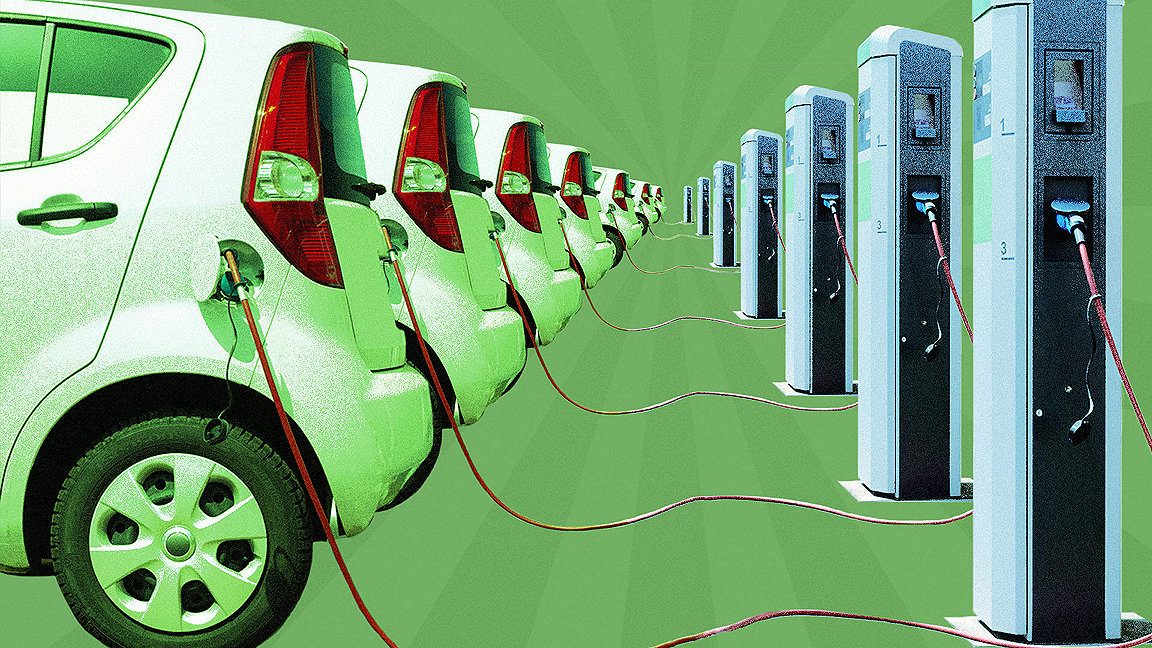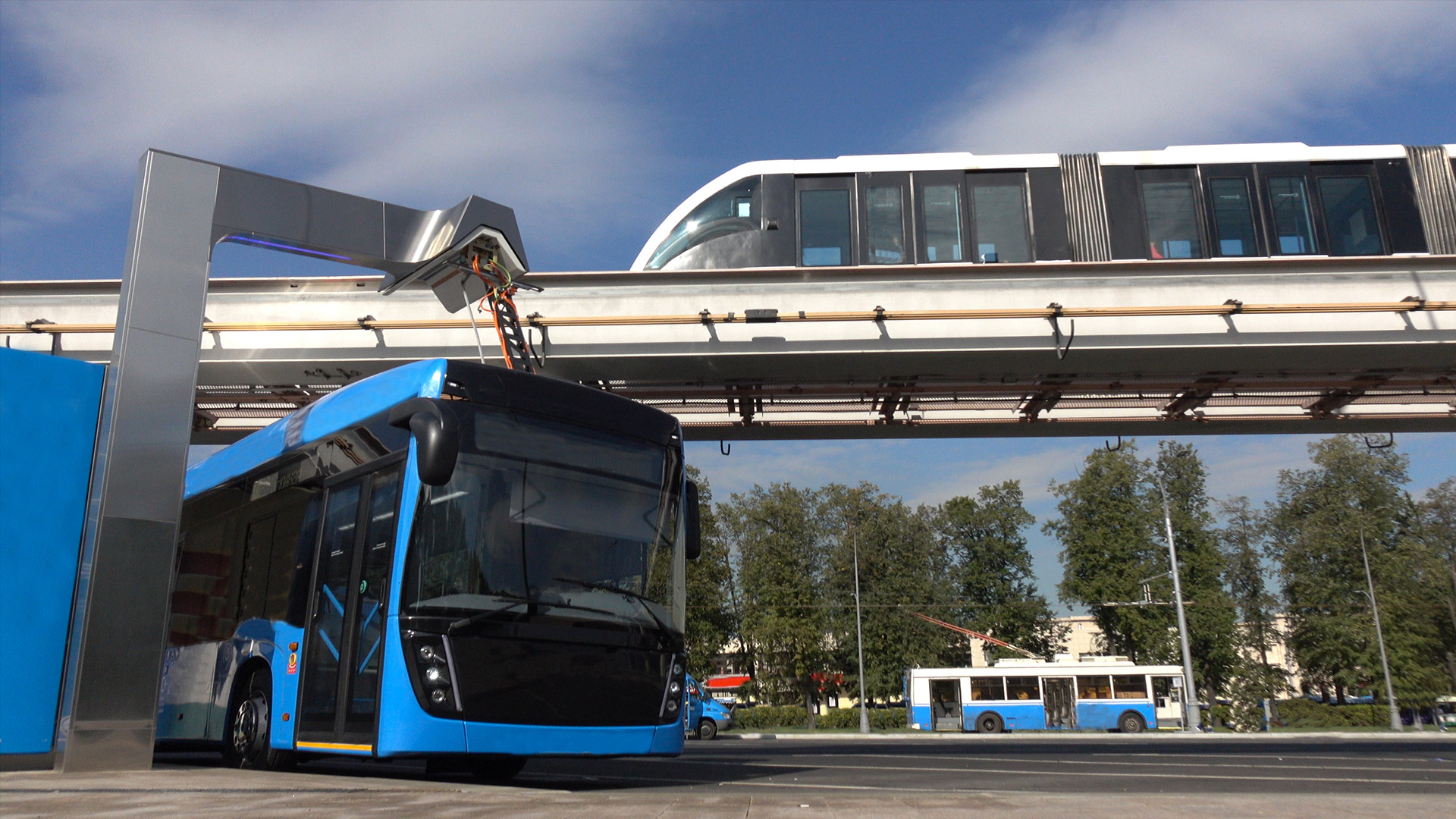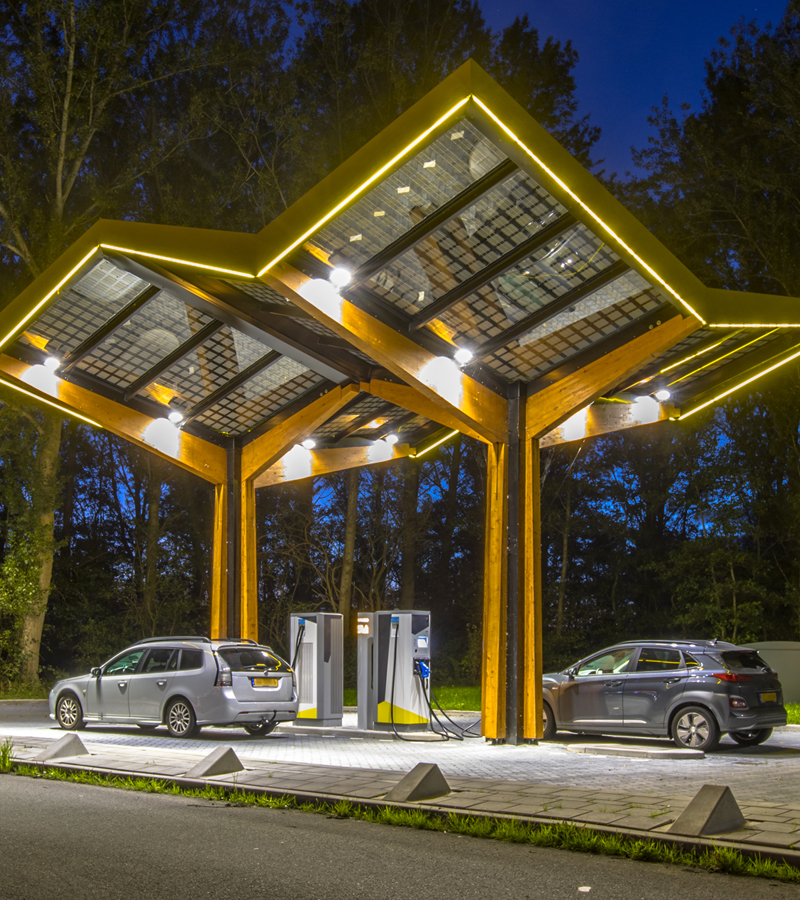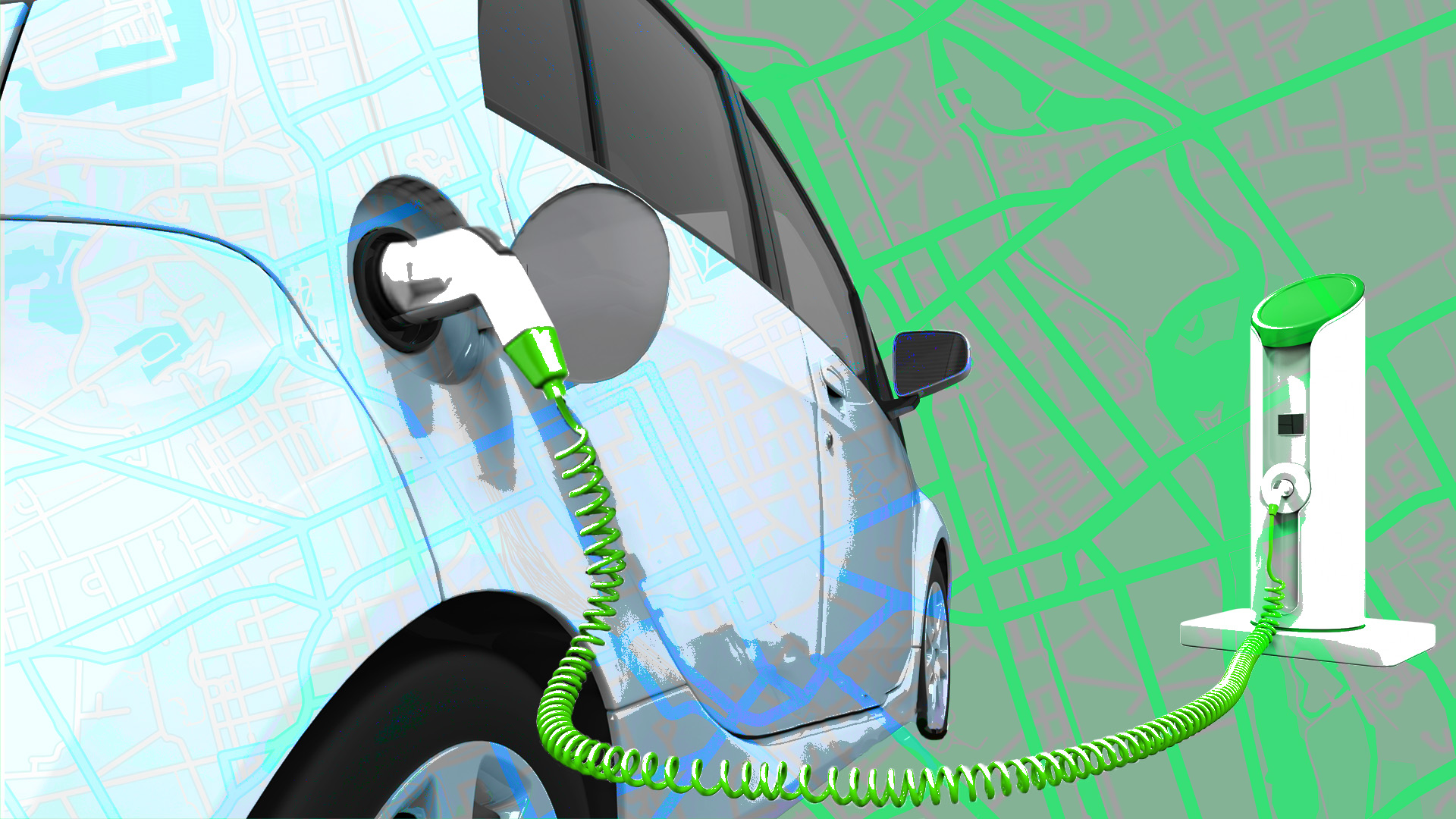
As delegates converged upon Glasgow in November for the COP26 UN Climate Change conference, organisers fell victim to an unfortunate irony. Jaguar LandRover had provided 240 electric cars to ferry VIP delegates between meetings and back to their hotels.
But a shortage of charging points across the city meant that, when combined with the existing electric vehicles already in Glasgow, there were now 23 cars for every charging point. As conference organisers shipped in generators to charge the cars, newspapers quipped that green vehicle were being matched by red faces.
With 10% of global emissions currently coming from road transport, turning the world’s vehicles electric is a central priority for governments across the globe. But the transition to electric vehicles [EVs] can only move as fast as the creation of the infrastructure needed to charge them, a task fraught with uncertainties and constraints.
The effectiveness of charging infrastructure is hostage to the unpredictable pace of battery development. “It may be that batteries reach such performance heights that eventually we may need no charging infrastructure outside the home or the office,” says Tony Mulhall MRICS, associate director at RICS. But that is no excuse for inaction. National, state and local governments must plough on, installing local charging points assuming they will be used, searching for ways to reconfigure electricity grids to handle the increased loads, and considering how best to finance the shift so that it is affordable for all.
So how are difference cities and countries around the world approaching the EV revolution in terms of charging infrastructure?
Milton Keynes, UK
Designing the infrastructure for EVs means understanding future demand, an uncertain practice given unpredictable travel patterns since the pandemic and a future where vehicles may no longer need drivers.
Public transport enjoys at least a modicum of predictability around future usage and illustrates how far charging infrastructure is contingent on vehicle battery constraints. Milton Keynes received a government grant to fund the introduction of a fleet of 60 electric buses later this year but the best electric buses have a range of nine hours, well below the 16-hour typical shift worked by each bus. So, the council opted for eight hours of slow charging overnight topped up by five minutes opportunity charging at the end of each route on a fast 120kW charger.
“The choice around battery charging hardware is determined by the use case,” says Tim Armitage who coordinates EV activity for Arup’s Advanced Digital Engineering Business from London and who worked on the project. Privately-owned cars sitting in a station car park for eight hours per day can get by on a 3kW or 7kW charging points; commercial delivery vans needing a top-up at the depot during brief loading periods will need something more powerful.
Making the right choice about charger power is valuable. “The expense increases by orders of magnitude as you step up the power,” says Armitage. Low-powered chargers have the least impact on the grid and are cheaper to install, too.
But use cases are hard to predict. Companies’ data on how they use their vehicles is often piecemeal and incomplete. Sometimes, uses seem to preclude anything but the briefest, and therefore costliest of charges.
Hong Kong
Government policy is pushing the city’s electrification programme – economic incentives which include subsidies for EV purchases and charging infrastructure, are helping to increase EV ownership. Phasing out petrol car sales by 2035, the city plans to double charging stations over the next four years, in part by converting existing petrol stations. The number of electric passenger cars on Hong Kong’s roads has increased from 180 in 2010 to nearly 25,000 in October 2021.
California
In the US, the city of Santa Clara in California is benefitting from a state-wide carbon emissions trading programme. Legislation that requires emitters to purchase carbon credits also pays those providing EV charging points to accumulate them, by delivering clean power to cars. So the 1,000 or so charging points across the city – roughly a tenth of which are publicly owned – generate revenue as soon as they are installed.
“They are not a money maker for us by any means. But we can subsidise this until the battery technology is better or the [private] charging stations get faster,” says Kathleen Hughes, senior division manager, for the city authority.
The city has its own electrical utility, Silicon Valley Municipal Power. With power 20% to 40% cheaper than neighbouring cities, the economic incentives for EV charging at home are further boosted.
But Santa Clara faces a growing load on its grid. Widespread solar power adoption has seen grid demand in many Californian cities fall, since solar power is typically generated and used on the same site. But in recent years that has been countered as Santa Clara has become a popular location to house the power-intensive server farms that keep Silicon Valley ticking, and, overall, the load on this city has increased.
The city’s grid will soon face more challenges. Recently passed building codes mandate charging points in all new residential and commercial buildings. And the state government is chomping at the bit to mandate electrification for heavy duty vehicles across both public and private sectors, from garbage collection to sewage trucks and articulated haulage vehicles.
Incentivising consumers to use power when the grid can most spare it will be an important part of the solution. “We need to think about the right price signals to help manage this. We have a lot of work to do,” says Hughes, who points to smart meter installations as one way to facilitate the shift.
“I’m not sure whether the industry or suppliers are quite ready for the changes” Michael Morgan MRICS
Germany and Norway
Germany and Norway have adopted contrasting solutions to the problem of how to manage the increased stress on the grid posed by the growth of EVs. Householders in Germany apply to their local power provider, who grants them permission for a charging point if the local substation can support it. The grid operators have remote control of the charge points and build a charging schedule (timing and actual power provided) around how EVs are actually charged and when from a particular substation.
“You put your car in to charge overnight, you just don’t know when it will happen,” says Dirk Niemeier, lead for clean energy solutions, at PWC Strategy& in Munich. It could be charged from 8-10pm or 3-5am, but it will be ready for you in the morning.
In Norway, the local utility also decides how much each user can draw from the grid. But here users have become the architects of their own home charging schedules, incentivised to minimise the stress of their usage on the grid. Householders there typically pay the wholesale energy price plus a margin to their local provider. A fast-expanding range of apps show them exactly what that price will be over each of the next 24 hours allowing them to set their own charging schedule accordingly. Alternatively, individual charge points can be set to charge automatically, when energy is cheapest, with users stipulating how much charge they want.
“While the local distribution networks will need to be reinforced for the increased demand, this may not be as much as you would have to without the dynamic pricing that incentivise users to charge off peak,” says Milos Bartosek, a director at PWC Strategy & Deals in Oslo. “This is the result of the government's focus on energy market liberalisation over the years.”
German grid operators have remote control of the charge points and build a charging schedule around how EVs are actually charged and when from a particular substation

Charging in the home, UK
However convenient new remote charging infrastructures turn out to be, most EV owners will still do most of their charging at home or work. So, just as important as getting power to charging points across the world’s road network, making a success of the new charging infrastructure requires a large-scale rethink of how to serve growing electricity demands in the home.
The growing uptake of EVs, helped by recent soaring petrol prices, is seeing an increasing focus on charging points by those buying homes. The number of listings that mention EV charging points on UK property website Rightmove increased six-fold in the two years to October 2021. “We’re hearing from agents that potential buyers are increasingly adding access to a charging point to their list when choosing the right home,” says Tim Bannister of Rightmove.
Getting more power to UK homes
A new development project in the UK’s Thames Estuary provides some handy clues about how energy procurement might work as home power requirements expand to meet EV charging needs.
In 2015, a new garden city was earmarked for development out of abandoned chalk quarries in Ebbsfleet, near Gravesend on the Thames Estuary. One of the country’s largest regeneration projects, securing power and other utilities for an unplugged collection of chalk pits would always be unaffordable for local developers, who would probably leave such a site undeveloped.
To make the market function, Ebbsfleet Development Corporation (EDC) was created. It paid local energy provider UK Power Networks (UKPN) to upgrade an existing grid site, add a second and install two or three substations to step down the voltage to a level suitable for Ebbsfleet’s new residents and businesses. Developers then pay UKPN to install the local power infrastructure they need for their homes and UKPN pays money back to EDC, which recovers its funding.
Last year, Ebbsfleet remodelled its future power demand estimates to accommodate projections about EV use and the ban on gas boilers in new homes, which comes in to force in 2025. The predictions found that electricity demands for most homes would treble from current levels.
Energy providers will have to nudge their customers into smarter use of the power grid – measures would include variable pricing and smart charging - if it is to manage the new demands, says Julia Gregory, director of projects at EDC. “The power industry will need to work with its customers to smooth demand. For EVs, it will be about when or how people recharge their vehicles overnight. This is a fundamental change and there is a lot up for debate at the moment.”
Mandating UK domestic EV charging
Click on the plus symbol below to read more
Provisions in the UK for charging points will be enforced from June with the toughest requirements falling on new dwellings.
“The rules and guidance are more explicit than guidance for things like energy efficiency,” says Michael Morgan MRICS, technical and major projects manager at London Building Control.
At their heart is the requirement to provide charging to support an EV for every dwelling. But further provisions promise to remove the pinch in some cases. Where the cost per point exceeds £3,600, the requirements soften – in some cases, providing the electrical ducting as far as a location for the point may be enough.
The rules also consider feasibility in buildings of historical interest too. Where work would unacceptably alter their appearance, the newly formed dwellings would be exempt.
Where a non-residential building is erected which has more than 10 parking spaces, one of those parking spaces must have access to an electric vehicle charge point and another fifth should have a duct capable of receiving a charge point. This is likely to place less burden on smaller buildings where the relative capital costs are high.
Retrofit rules, generally less stringent and covering buildings in which undergoing a major renovation, also come into force in June. These could be more onerous as installing a charging point during a retrofit can cost more than on a new build. “But there appears to be a financial limit based on the estimated cost of works,” says Morgan.
Where Gregory worries about the surge of demand EVs will add to the grid, Morgan questions whether the UK is prepared for this scale of installation required. “I’m not sure whether the industry or suppliers are quite ready for the changes,” he says.
Netherlands case study
The first EV charging station was installed in the Netherlands in 2009. With the separation of the country’s electricity grid and its electricity suppliers that year, it was decided that, rather than it being an asset of the grid, charging connections were part of a commercial marketplace, like smart metres in buildings. The grid would treat charging stations as if they were a home connection and the first tender for 355 fast charging stations along the highway was made in 2012.
Subsidies were launched in 2014, under a green deal which also created the national Knowledge Platform for Charging Infrastructure (KPCI), charged with developing a private market that could function without subsidies. In the intervening period, subsidies have been whittled down; what remains is a reduced energy tax on operators of charging stations and subsidies on EV purchases for consumers. Ensuring charging points in remote areas – which by themselves are unprofitable to provide – is achieved by combining them with profitable urban areas.
Today, the Netherlands’ charging infrastructure network is a well-functioning private market that is expanding fast, according to Roland Ferwerda, managing director for KPCI. But several challenges remain.
“The biggest is what the grid can handle,” he says. A widescale shift to smart charging – a network of intelligent charging interfaces which calibrate their demands to what the grid can supply is needed. Without this, current capacity would be exceeded if tomorrow all vehicles became electric and the hoped-for shift to alternative energy generation took place.
The network also needs to improve users’ experience, with clearer data on whether points are occupied, a functioning reservation system and better complaints procedures. Finally, forecasting of EV vehicle adoption is needed, so that charging points can be rolled out before they are needed. Replacing the current norm - where those without a private parking space apply to local government to provide a charging metre - will encourage adoption of EVs. “But it also means installing them before they will be profitable,” Ferwerda says.



